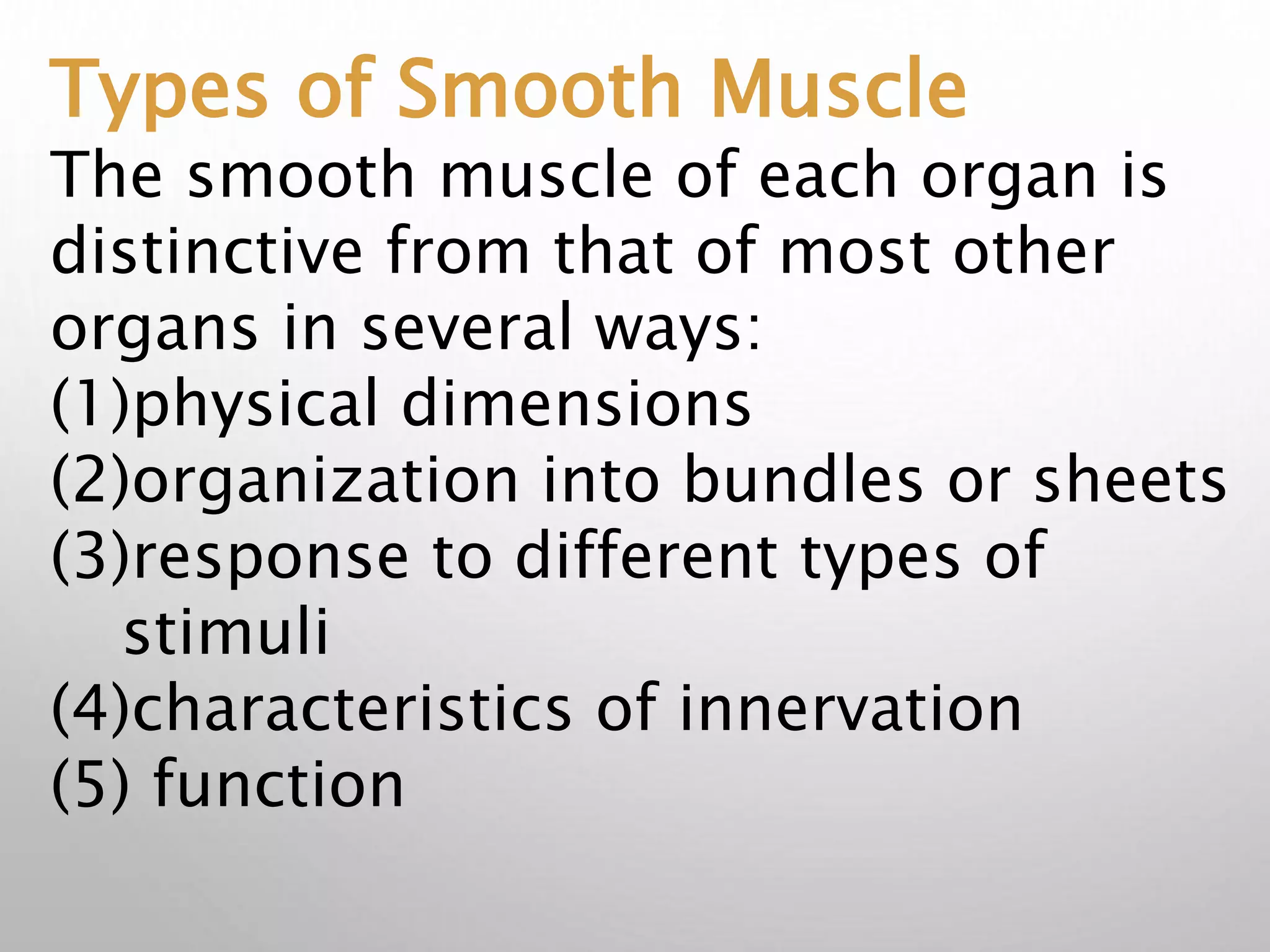- Smooth muscle fibers are much smaller in diameter and length compared to skeletal muscle fibers. Smooth muscle lacks striations and is located within organs like the intestines and blood vessels.
- Smooth muscle contraction is initiated by an increase in intracellular calcium ions which can be triggered by nerve stimulation, hormones, stretch of the fiber, or chemical changes. Calcium then binds to calmodulin instead of troponin to drive contraction.
- Smooth muscle exhibits a slow cycling of myosin cross-bridges, requiring less energy for sustained contraction compared to skeletal muscle. Its contraction and relaxation is also slower than skeletal muscle.

























